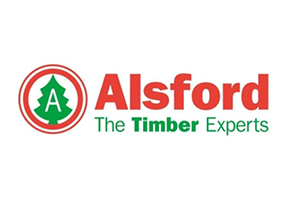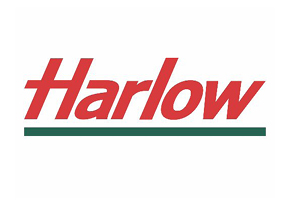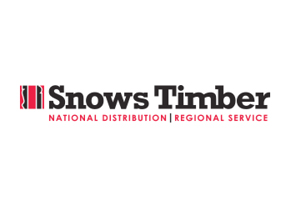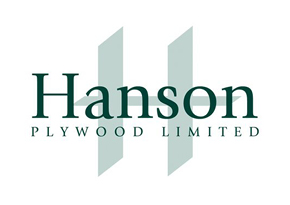- Case Studies
- Long Sutton Studio, Hampshire
Long Sutton Studio, Hampshire
Introduction
Set at the end of a long rural track in Hampshire, Long Sutton Studio is a building which celebrates timber in its many forms: softwood and hardwood, laminated, planed and rough sawn. Timber is the predominant material, used for both structure and cladding, and its different forms give texture, identity and character to the building. Although Long Sutton Studio might appear to be a very traditional timber building at first glance, a closer look reveals a contemporary approach to structure, form and detailing.
The client, Tom Lloyd is a product designer and the site is in the grounds of his home, a former farmhouse in Hampshire. He wanted a building that could fulfill a series of basic functions; studio, workshop, garage or storeroom. It was also an opportunity to combine architecture and timber craftsmanship to create a simple yet beautiful studio that would enhance the rural setting of his house. Tom obtained outline planning permission and was closely involved in all aspects of the design with the architect Cassion Castle Architects and the structural engineer Structure Workshop.
Long Sutton Studio replaces a concrete garage and timber shed, both of which were in a poor state of repair. A key objective was to replace these with a single building that was more sympathetic to the main house in its design and choice of materials. The new studio is deliberately understated; its traditional pitched roof form suggests that it might have stood there for many years, blending inconspicuously among nearby vernacular buildings, but close inspection reveals the modern detailing which gives it a subtle and contemporary identity.
Externally, the studio is an assembly of traditional materials – green oak, red brick, reclaimed roof tiles – reflecting those used on the main house. In contrast, the interior of the studio is a lofty single-volume space with all the timber elements clearly expressed and visible. The primary structure is a series of six portal frames, of glulam members connected by exposed galvanised steel plates and fixings. With the use of stiff joints, the glulam frames create an interior which is open up to the ridge, crossed only by delicate steel tension cables. Spaces created within the depth of the walls are used as workspaces, shelving and storage. Objects placed here, such as a log pile or piece of wooden furniture, take on sculptural characteristics themselves and extend the celebratory use of timber.
Long Sutton Studio is completely accessible to all building users. Because it is illuminated almost entirely by natural light and has no heating, its carbon footprint is negligible.
The walls are clad with vertical boards of rough sawn green oak weatherboarding set on a red brick plinth. The pitched roof is sheathed in plywood and laid with reclaimed tiles. Natural light is admitted through roof lights set in the slope of the roof, avoiding the need for windows in the main elevations which would have interrupted the strong rhythm of the weatherboarding. Two sets of large oak-clad double doors open up to admit further light when weather permits.
The cladding is board-on-board green oak fixed to chamfered, 50mm deep treated softwood counter battens. The boards are visible from inside the building – there was no requirement for insulation. The oak was sourced from a sawmill not far from the site, where it was sawn to wider 145mm x 22m boards and narrower 60 x 22mm boards, delivered to site green.
Given the risk of movement, cupping and shrinkage of the green oak, the architects consulted TRADA on the application of the cladding. ‘We consulted TRADA on fixing methods, overlap and orientation of the vertical board-on-board cladding. We used the wider board on the inside, heartwood-in, with a 20mm gap between; externally we used the narrower boards, heartwood-out, which covers the gap with a 20mm overlap of the wider board either side. TRADA also gave advice on the number and spacing of the stainless steel fixings, how much movement could be expected in the oak and the likelihood of boards splitting with single or multiple fixings per plank. TRADA’s experience helped us to understand the material characteristics to a greater degree, and confidently specify the correct fixing methods for the application’.
The structure
Peter Laidler, Director, Structure Workshop describes his approach to the structure.
‘The design of the building resulted from an equitable collaboration between client, architect and engineer, all of whom had worked together previously.
From the outset the client was clear in his brief for an essentially vernacular building, carefully detailed. The location was agreed on site and as structural engineers we proposed both plan grid and framing arrangement. The architect’s input subsequently followed and owing to also being the contractor, allowed for the integrated detailing and construction of the building. This resulted in a clearly expressed building that sits calmly in its setting.
Numerous options were considered for the framing arrangement. Of particular interest technically was the positioning of pinned connections to allow easy analysis and simple construction. Conceptually an arch, or in this case a frame, can contain up to three pins i.e. joints that permit rotation, and remain stable. More than three pins and the arch becomes a mechanism and cannot be ratified. Fixed joints attract moment and require more fasteners. It was therefore decided to locate pinned joints at the eaves and ridge to minimise the visual clutter in these prominent positions, and to fix the column bases which are less noticeable. To reduce the glulam section sizes a tied collar was introduced and by using flitch plates let into the solid sections, steel dowels were designed in place of bolts to further refine the connections. In the event bolts were used instead of dowels to save on cost.
The secondary framing is non-standard in that there is no ridge board or wall plate. Instead, offset purlins are fixed to the principle rafters and the columns, common studs and rafters are half lapped with one another and bolted together at the ridge and the eaves.
Longitudinal stability is provided by diagonal bracing rods which run around the walls and roof at each end resulting in a symmetrical structure in plan, section and elevation.
These subtle departures from standard detailing combine to contribute to the simple but carefully detailed structural form’.
The 270 x 90mm gulam frames are set at three metre centres and support a series of smaller components, layered over them in a clear hierarchy. Along the pitched roof, two large 175 x 75mm glulam purlins run behind the glualm portals, each notched in and connected to them with a bolted steel flitch plate. A series of 75 x 50mm C24 rafters are screwed to the purlins at 400mm centres. There are no eaves beams or ridge beams; instead the rafters are half lapped at the ridge and bolted together, while at the eaves the rafters are half lapped to the wall studs. Along the walls, two large 175 x 75mm glulam sheeting rails run behind the glulam columns and are notched and connected to them with bolted steel flitch plates. The 75 x 50mm wall studs are also exposed; they run at 400mm centres and are screwed to the sheeting rails.
May 2013
Building Type:Studio, Workshop
Location:Hampshire
Country:England
Timber Species:English oak, redwood
Awards:RIBA Award 2014, shortlist Blueprint Award 2014, Surface Design Award 2015
Timber Element:Glulam portal frame, cladding, framing and sills, sheathing to roof
Client:Tom Lloyd
Architect:Cassion Castle Architects with Tom Lloyd
Contractor:Cassion Castle Architects
Glulam structure:Kingston Craftsmen
Structural Engineer:Structure Workshop
Timber supplier:Honeysuckle Bottom Sawmill
Suggested Reading
Specifying externally exposed structural timber
This Wood Information Sheet (WIS) looks at some of the factors to consider when specifying a desired service life for structural timbers that are to be exposed outdoors but not in contact with the ground.
This WIS addresses general principles of structural design only, giving an overview of the...
24/11/2017
Standards Update October 2017
An update of British, European and International Standards relating to timber, including new and revised Standards, those withdrawn or amended and drafts now available for public comment, updated bimonthly.
30/10/2017
List of British Standards October 2017
A list of British Standards which relate directly to timber, updated bimonthly.
30/10/2017























